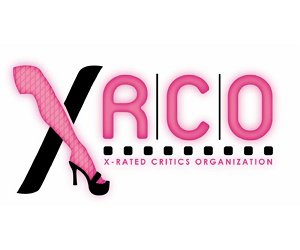Source: AP
By: Company Press Release

(BALTIMORE, MA) — About a block from Camden Yards, Baltimore’s charmingly retro ballpark, sits a gaudy strip club with a spiritual connection to Babe Ruth – and not just because the Bambino was a major-league boozer and skirt-chaser.
Ruth once owned and lived in the three-story building at 38 S. Eutaw St. and ran a bar there, making the site a precious physical reminder of Ruth in the city where he was born.
Now the owner of the strip club, the Goddess, is hoping the Ruth connection can save his business from the wrecking ball.
Baltimore has obtained legal authority to condemn the club and between 40 and 60 other properties to make room for a thriving entertainment corridor near Camden Yards.
Goddess owner George Kritikos is working to have the building nominated to the National Register of Historic Places and the city’s Commission for Historical and Architectural Preservation, hoping the distinction will protect the place.
City officials say they have no immediate plans for the property. Sharon Grinnell, chief operating officer of Baltimore Development Corp., says that if the building is given historic recognition, “we would respect that. But we still might want to acquire the property in order for it to be part of a larger development.”
Long before the strippers moved in, the bar was known as Ruth’s Cafe. Ruth, whose statue at Camden Yards can be seen from the strip club’s front door, bought the building after he helped the Boston Red Sox win the 1915 World Series. During the offseason, he lived in the building, tending bar with his father and teaching neighborhood kids how to box in a back room.
A yellowing photograph a few feet from the strip club’s stage provides a glimpse into Ruth’s life during those times. The photo shows Ruth and his father dressed in striped shirts, neckties and white aprons, the bar festooned with ribbons and streamers. A hunting dog sits on a wooden chair, while a man in a fedora leans jauntily against the bar, drink in hand.
Michael Gibbons, executive director of Baltimore’s Babe Ruth Museum, recommends the building to “baseball pilgrims on their Babe Ruth trail.”
“You don’t have to go inside for it to be important,” he says. “People can show up and point to it and say, ‘Babe Ruth bought that bar for his daddy.'”
Ruth was raised in Baltimore, but only a few sites associated with him remain. His birthplace is now the Babe Ruth Museum, but the place where Ruth spent much of his childhood — St. Mary’s Industrial School — doesn’t even bear his name.
Then there is the Goddess — billed as home to the “Friendliest Girls in Town!” Inside, nude young women twist around a gold pole on a stage behind the bar, moving in time to loud, pulsing music as men shower them with dollar bills amid the flashing colored lights.
The Goddess enjoys a prime location in a booming part of downtown Baltimore. On game nights, hundreds of Orioles fans stream by the club and past a line of less-seedy buildings that includes fancy hotels, renovated theaters and luxury apartments.
“When it’s like this, you can drop a needle and it won’t hit the sidewalk,” says Kritikos, who does his best to fish patrons from the sea of Orioles orange and black. “Anybody who knows anything about business knows this corner is a gold mine.”
It was the location that led the 40-year-old Kritikos to stake his life savings to buy and renovate the club. He acquired the club eight years ago for $450,000 and says he has spent $300,000 renovating the building, including the entryway, near the spot where Ruth’s father died in 1918 after falling and hitting his head during a brawl.
“Everything we did in our life is riding here,” says Kritikos, a Greek immigrant who came to America at 16. “I came here with no language, no education, ready to do anything I can and believing in the American dream. For them to come and tell us, thank you very much, we’ll take it from here? It doesn’t seem right.”
Ruth’s adopted daughter, Julia Ruth Stevens, 87, says her father spoke fondly of buying the bar for his father.
“He was so proud that he was in a position to do that for his father,” Stevens says. “I would dearly love to see that building restored. There are too many things that are being torn down that can never be replaced.”

















